Manta Research at the Bahamas, Atlantis Aquarium
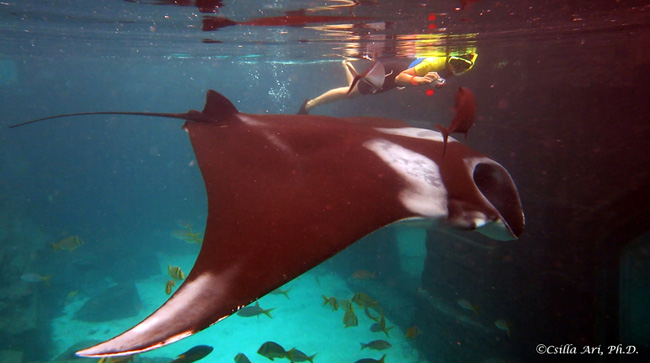
In 2011 Dr. Csilla Ari received a grant from the Save Our Seas Foundation to perform studies on the sensory, learning abilities, cognitive and social behavior of giant manta rays on captive specimens at the Atlantis Aquarium.
Dr. Ari`s previous research revealed that manta rays have the largest brain of all fish studied so far. Her study was published in the Open Anatomy Journal in 2011 and is available for free to the public: http://www.benthamscience.com/open/toanatj/articles/V003/1TOANATJ.pdf
`I did my PhD on the neuroanatomy of different shark and ray species, so I compared the brain structure and histology of several different cartilaginous fish species. The brain of mantas and mobulas were outstanding. To date nobody knows for certain why they need such large brain. I have been interested in manta rays since I was 13 years old, but after studying their brain I became even more keen to find out more about their abilities and social behavior.`-talks Csilla about the beginnings.
The Save Our Seas funded project mainly focuses on finding out more about the visual abilities, social behaviour, learning and memory of giant manta rays (Manta birostris) with the largest brain of all fish.
Why it is important
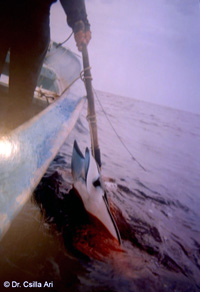 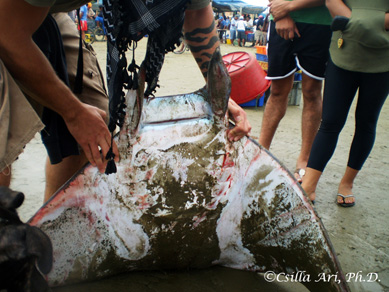
Manta and Mobula populations are heavily fished in many countries, they are listed as vulnerable and near threatened on the IUCD Red List, while we still know only a very few things about them. They are difficult to study in their natural habitat because their presence is often unpredictable, an experiment conducted in the wild is often expensive, and it is hard to create a well-controlled environment.
Dr. Ari published the first scientific paper on a behavioral experiment conducted on a giant manta ray (Manta birostris) in the Lisbon Aquarium, which revealed some interesting information about the importance of vision in the life of manta rays. 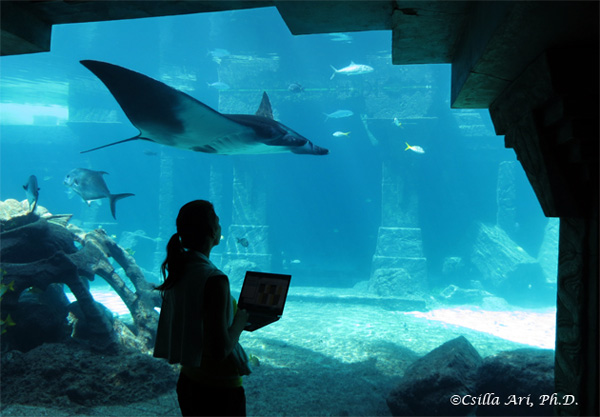
`The curiosity and interest of these animals toward humans, as well as the results of the preliminary experiments on wild manta rays in the Maldives and Ecuador have inspired me to conduct more detailed experiments in a well-controlled environment. I have been in contact with the Atlantis Aquarium, Bahamas from 2005 in order to continue my experiments on the giant manta rays, which I started at the Lisbon Aquarium in 2004. I am very grateful for the Save Our Seas Foundation that made it possible to finally study the manta rays at the Atlantis Aquarium by providing funding.`
Experiments at the Atlantis Aquarium
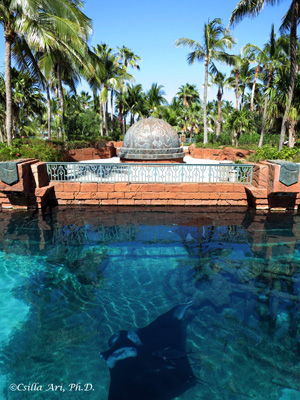 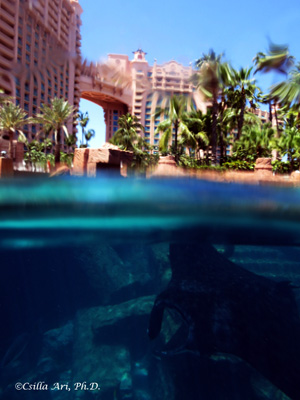
`During my study a new specimen was introduced to the tank, which specimen most likely belongs to a still undescribed, third manta ray species. She had some morphological characteristics that would imply she was a Manta birostris but other characteristics implied she was a Manta alfredi. It was a very exciting time to observe an animal which does not even have a proper scientific name yet.`
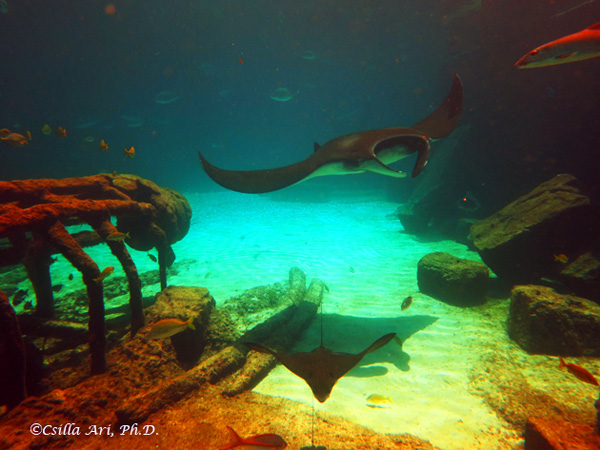
`One of my main goal during this project was to understand more about the visual abilities of manta rays and the importance of vision in their daily life, which could also help us to assess the impact of the presence of divers, boats, artificial objects in their natural habitat. A line avoidance test was designed to reveal their visual threshold until where they are able to detect floating lines, other tests to find out whether they could distinguish people and whether they respond differently to objects with different properties.
My other main goal was to find out more about their learning abilities which tells us how much they rely on previously learned experiences. This information helps us to predict whether they are able to follow daily/monthly routines, for example how efficiently they are able to memorize migratory routes, certain places or certain individuals.`
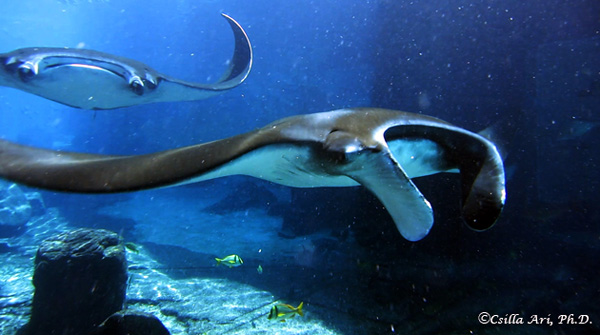
`Self-awareness is a very important adaptation, because it gives animals the ability to recognize their environment and themselves, therefore the `mirror test` was performed on the captive manta rays at first time, which resulted in a very interesting outcome, but could not be finished completely due to technical difficulties.
Brain anatomy and now behavioral observations of manta rays indicate that they are more social than solitary, many aspects of inter- and intraspecific communication has been documented and still being analysed, while even more question arise. Most of social animals that need each other in order to improve their survival also possess a strong emotional communication behavior, which was documented first time ever on manta rays.`

`During this project I managed to identify behavioral characteristics that will improve our understanding about their habits and lifestyle and therefore enable us to make their protection more successful. The collected data is still being analyzed and it will take a few months to go through and make sense all the behavioral observations. All these results will also significantly help the welfare of captive manta rays in aquariums worldwide. The results of the research will help public awareness and conservation initiatives worldwide through posters, presentations and scientific publications thanks to the Save Our Seas Foundation. I am very excited to continue this type of research, I believe there is a lot to learn about and from these animals.`-summarizes Dr. Ari the progress made at the Atlantis Aquarium.
Her blog posts are available on the Save Our Seas Foundation website.
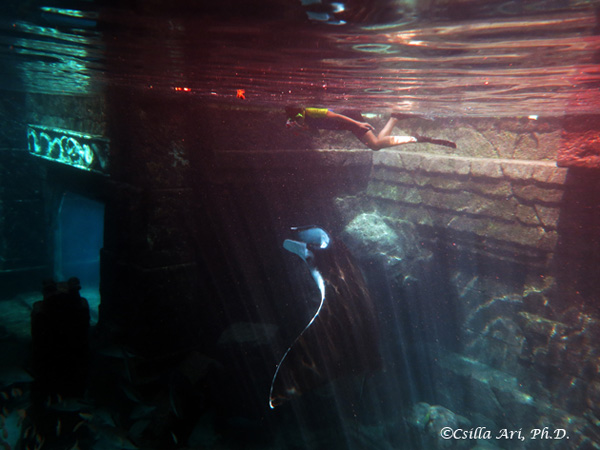
|
